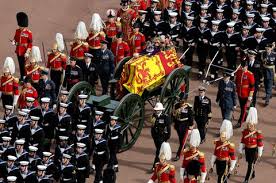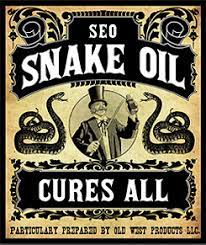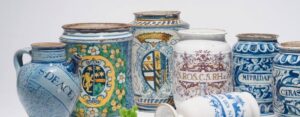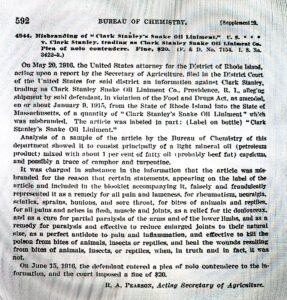This maybe my last reference to the woman who has been background activity throughout my life. I have not watched any episodes of The Crown. To me, it is difficult to have lived a life without her intruding upon it, and I don’t need another’s interpretation. Hence the views contained in this blog.
I am an information omnivore with a photographic memory for trivial facts; I was at lunch yesterday and at it there was a bloke with whom I had been friendly at school. He recalled that I could recite every book of the Old Testament. Today, we agreed we would be hard pressed to go beyond the Book of Ruth.

Yet here was a person, under the cover of the “Royalty Tag”, who had structured her movements by the use of her handbag and her political opinion by the brooches she wore. These non-verbal communications may be the tip of huge tumulus of royal communications known to very few but enabling the Queen, even in death, to move seamlessly without having to give voice to any political opinions. Her brooches and other adornments could identify likes and dislikes. This was a life so scripted that even “times of spontaneity” were inked into the daily routine. The detailed code has not been published – as yet.
Nevertheless, if the leaking pen is any indication, non-verbal communication may not survive under King Charles III.
As a corollary of our mutual recollections on the pavement outside the lunching venue, I reminded him of the time he was driving home with his wife. I was in the back seat with my then wife. She had warned me that my friend was drunk, but with myself having a haze of alcohol casting a generous interpretation on his condition, we all got into the car.
Less than a kilometre on, we had just topped the hill, and there was a tram coming up the other side, its lights blazing, and the driver urgently ringing his bell. It did not seem to affect my erstwhile friend until the last second when he tried to avoid the tram, but to no avail. The tram struck us.
We were fortunate. We were struck almost at the terminus and as a result the tram was slowing down. Otherwise, who knows. Miraculously we were all uninjured; the driver’s wife gave him a dressing down – and up as well.
We did not stick around. There was a taxi passing which fortunately was empty. I remember looking up the newspaper the next day. There was nothing reported, and as we did not see them again, the question of accepting another lift never occurred.
Her Last Hurrah
The British do funerals extraordinarily well, and probably her funeral was the last and most telling of Queen Elizabeth’s non-verbal communication. The reasonable assumption is that she involved herself in the overall planning of this – even that, given the length of her reign, funeral arrangements would have to be updated regularly, especially with such a huge group of actors. The turnover of naval ratings drawing the gun carriage must have been just one example.
The fact that it was so meticulous, a “professionalism” showed when compared to that of her father’s and grandfather’s, confirms that this woman had a keen eye for detail.
Her father’s and grandfather’s coffins were taken to Windsor from Paddington by train, and the railway station is about a four-minute walk from Windsor Castle. Elizabeth preferred the motor hearse. Following the hearse along the Long Walk is a five kilometre forty minutes walk. Added to the three kilometres they had to walk behind the catafalque in London, she ensured that her children and grandchildren had a pleasant Monday walk of about eight kilometres; stiff armed with small steps which, in spite of the solemnity of the occasion, it was very reminiscent of a group of toy soldiers. Both Andrew and Harry had to walk the walk in mufti.
Her funeral had a distinctly Scottish flavour, with her Scottish bodyguard – the Royal Company of Archers – being very prominent. Scanning the two previous funerals, I could not detect them, at least not in a prominent place.
 And the funeral procession itself dispensed with the gaggle of European royals and heads of State, who were ensconced in the Abbey without the obligation to walk.
And the funeral procession itself dispensed with the gaggle of European royals and heads of State, who were ensconced in the Abbey without the obligation to walk.
At the funeral for George V and VI, there was only one service and that was at St George Chapel at Windsor Castle. In fact, the last time prior to Elizabeth II that Westminster Abbey was used for a Royal funeral was George II in 1760. This recent production thus provided a prime television venue at the Abbey, and then the smaller service at Windsor. In part this enabled the Heads of State to go straight to the Abbey and not provide a distraction, which would have occurred if they had marched. It was a two-part tableau.
At her father’s funeral, Elizabeth travelled in a carriage while the Dukes of Edinburgh, Gloucester, Windsor and Kent walked behind the gun carriage. The Queen had travelled with her mother and sister and the Princess Royal, cloaked in black with black veils covering their faces and heads. Looking at these shapeless figures, it is no wonder the Queen determined that when she died, the female royals would be clearly visible and not subjected to wearing “widders weeds”.
Yes, four billion people participated in this last great complex example of the late Queen’s non-verbal communication.
St Paul

I named my first son Paul. I am not a Biblical scholar, but St Paul always appealed to me because of his forthright personality. The King James version of the Bible demonstrates his eloquence in exhorting the early Christian Church to stay strong and true to a religion founded on the death and ascension of Jesus Christ about 25 years before. In fact I have read the letters he wrote to all and sundry.
Paul recognised that he had a limited time on this planet too. After all, his eloquent farewell in his second letter to Timothy attested to this: “I have fought the good fight, I have finished the race, I have kept the faith.” The rest of the letter is telling his followers what they had to do in regard to his unfinished business.
At the Queen’s funeral was Paul’s defiance in writing to the Corinthians – “O death where is thy sting? O grave where is thy victory?” (I unapologetically use the King James’ version.)
Yet his most famous exhortation was also in his writing to the Corinthians:
When I was a child I spake as a child, I understood as a child, I thought as a child: but when I became a man, I put away childish things.
For now we see through a glass darkly; but then face to face: now I know in part; but then shall I know even as also I am known.
And now abideth faith, hope, charity, these three; but the greatest of these is charity.
It was not on the Queen’s list of favourite Pauline aphorisms, perhaps by his use of “man” rather than “adult”. St Paul was undoubtedly authoritarian in the way he ordered all and sundry to do the right thing. St Paul was big on obedience, and hence the accusation of misogyny is understandable; given his view of women, St Paul seemed at times to be a “pain in the arse”, and yet he was a brave, resolute person, just what the early Church needed.
After all, as its text the anthem at the funeral took an excerpt of Paul’s letter to the Romans which advocates an indissoluble bond between the believer and “the love of Christ.”
Prime Minister Truss, in the second reading, also quoted from Paul’s letter to the Romans:
“None of us lives for himself, and no one dies for himself: for if we live, we live for the Lord, and if we die, we die for the Lord. And so in life and in death we belong to the Lord. For this is why Christ died and came back to life, that he might reign over the dead and the living.
Like everything this meticulous woman did, the Queen inserted St Paul’s views strategically throughout her funeral service. To have the Prime Minister read these words shows how far the Pauline instruction has drifted from the actual way Prime Ministers conduct their lives. The Queen could have anticipated Boris uttering and choking on these words.
Further, perhaps the Queen felt that St Paul very much reflected her husband’s forceful independent streak. Perhaps not; but we shall never know. She would not have left any note. That was not her way.
Komedy Korner?
I repeat this report in the Washington Post, without comment except to say I hope America can identify madness early enough as Germany did not. More prosaically, if it does not work don’t do it again. Ergo, consign Trump to the political dustbin of history.
 Former president Donald Trump has set up his office on the second floor of his Mar-a-Lago estate in Florida as part replica of the Oval Office and part homage to his time in the real White House.
Former president Donald Trump has set up his office on the second floor of his Mar-a-Lago estate in Florida as part replica of the Oval Office and part homage to his time in the real White House.
On the wall during a visit last year were six favourite photographs, including ones with Queen Elizabeth II and Kim Jong Un. On display were Challenge coins, a plaque commemorating his border wall, and a portrait of the former president fashioned out of bullet casings, a present from Jair Bolsonaro, the so-called Trump of Brazil.
This has become Trump’s fortress in exile and his war room, the headquarters for the wide-ranging and rapidly escalating conflict with investigators that has come to consume his post presidency. It is a multifront war, with battlefields in New York, Georgia, and the nation’s capital, featuring a shifting roster of lawyers and a blizzard of allegations of wrongdoing that are hard to keep straight.
Look! Well? Feel! Well?
It is time to examine the evidence behind the medicines flogged on television by the entrepots, which specialise in the modern equivalent of snake oil.
 Perhaps I do snake oil a disservice. Made from the oil of the Chinese water snake, which is rich in the omega-3 acids that help reduce inflammation, snake oil in its original form is alleged to have been effective, especially when used to treat arthritis and bursitis. The workers would rub the oil on their joints after a long hard day at work. The story goes that the Chinese workers began sharing the oil with some American counterparts, who marvelled at its effects.
Perhaps I do snake oil a disservice. Made from the oil of the Chinese water snake, which is rich in the omega-3 acids that help reduce inflammation, snake oil in its original form is alleged to have been effective, especially when used to treat arthritis and bursitis. The workers would rub the oil on their joints after a long hard day at work. The story goes that the Chinese workers began sharing the oil with some American counterparts, who marvelled at its effects.
From then the descent into chicanery commenced and one American, Clark Stanley, for no scientific reason substituted rattlesnake (the water snake being unavailable). Rattlesnake oil anecdotally was far less effective, and then in a further descent, Stanley’s Snake Oil was shown not to contain any snake oil at all. It was found that it primarily contained mineral oil, a fatty oil believed to be beef fat, red pepper and turpentine.
At least the American investigators as far back as the turn of the 20th century had charted a pathway, and the judgement printed below is salutary reading.
Not that for one moment am I suggesting that the tonic and tinctures being flogged by these modern drug entrepots are all derived from heirs of the Oil of Water snake.
What is remarkable about these advertisements however is that first everybody pictured in these advertisements seems so very healthy. Yet we have the spectacle of basically young people with occasionally the obligatory child waltzing along a line of drugs with a shopping basket for God’s sake. How many pills, tablets or capsules are those depicted taking daily? In other areas of public policy, governments rail against the overuse and misuse of drugs. And yet here is its flagrant advocacy.
It is the very essence of the polypharmacy drug culture uplifted out of the gutter into some ambrosia-filled suburb of tree-lined streets. The people in these advertisement images are the last people who need any dietary supplements.
Now what are these spruikers, who seem to be bright, healthy and blonde women telling us to buy. There are the vitamins. In our society, there are more than enough vitamins in a normal diet not to need any supplementation. Having said that, I have developed a habit of taking vitamin D daily. This was due to a controversial measurement which tended to underestimate the level of vitamin D in the body. It has become a habit. As the Lancet opined “For those who ‘believe’, the lack of benefit found in most trials completed thus far can be attributed to issues including inadequate supplementation, testing of a population not sufficiently vitamin D deficient at baseline, incorrect formulation, underpowering, or insufficient follow-up.
However, the spruikers do not say what vitamins actually do, apart from inane slogans; or for that matter, what the next lines of placebos – the magnesiums, the zincs, the seleniums and other inorganic compounds. Obviously iron supplements are part of the treatment for anaemia, but not to be consumed as a spruiked lolly known as a “chew”.
Then there are the organic compounds – as they say, herbs, and spruikers are active here too. I must admit when a well-regarded doctor told me to take krill oil some time in mid 2013, when I had been progressively feeling something was wrong, I did; nothing changed. I just got worse.
In the end, I was diagnosed and placed on prescription drugs, which worked. I do not object to people taking anything which has been classified as herbal, as long it is not toxic. Herbs included in food are different from those sold as medicine. For instance, I do use two remedies – ginger tea for an ageing genito-urinary system and honey for a persistent cough. Each has some evidence of efficacy. Yet I like honey on my toast, and pickled ginger is a necessary condiment for sashimi.
Pharmacy has always built walls to protect its monopoly, which has also demonstrated the power of the pharmacy profession. I well remember when pharmacies were the only place one could purchase toothpaste – Ipana. However, it did not stop pharmacies from retailing not only the range of medicines which quacked but other goods. For instance, body hygiene and the “hypo-allergenic remedies” was equivalent to perfumes and cosmetics. It was only about 20 years ago, that some pharmacies still stocked tobacco products.
 The drug warehouse is just an extension of using the screen of the pharmacist monopoly provisions to peddle all sorts of claims for their remedies, often with no or little evidence of their collective efficacy.
The drug warehouse is just an extension of using the screen of the pharmacist monopoly provisions to peddle all sorts of claims for their remedies, often with no or little evidence of their collective efficacy.
The Review into Pharmacy Regulation and Remuneration in 2018 stated the following, which was broadly supported by the Federal Government.
Community pharmacists are encouraged to: a) display complementary medicines for sale in a separate area where customers can easily access a pharmacist for appropriate advice on their selection and use; and b) provide appropriate information to consumers on the extent of, or limitations to, the evidence of efficacy of complementary medicines. This could be achieved through the provision of appropriate signage within the pharmacy (in the area in which these products are sold), directing consumers to ‘ask the pharmacist for advice’ if required.
Judging by the way these products are being marketed, the above recommendation arising from the school of personal responsibility or lack of same, broadly falls within the rubric of “laissez-faire”.
The problem with the Therapeutic Drug Administration (TGA) is to know what does it do; and more to the point why is whatever it does done so slowly. How can such a government authority watch such blatantly dubious advertising as is occurring on media outlets and allow it to go unchecked. Since the above recommendation by the Review ignores any suggestion of it being a TGA responsibility to ensure its implementation being policed, why not just yawn, roll over and go back to sleep.

Arryn Siposs

Now hands up if you have heard of Arryn Siposs. Well, he played 28 games with St Kilda, being delisted in 2015. However, as he was a prodigious kick, he decided to go off to America and try his hand (or rather his foot) at American football. He went through the College football grind at Auburn University in Alabama. He then had a difficulty, not unsurprisingly, in getting a place in the AFL or NFL, being on the fringe for a number of years before nesting with the Philadelphia Eagles. Even then he is the guy who holds the ball for the kicker.
Then, the other day, his time came, playing against the Minnesota Vikings. He was holding the ball when the kicker kicked the ball into the opposing team, and it rebounded. Immediately one of the Vikings corner backs raced away and picked up the ball for an apparently certain touchdown against the play.
Siposs, who had to give the corner back more than a few metres, ran him down and saved that touchdown embarrassment. His speed in picking up the player and tackling him, when one of his fellow Eagles failed and given he grabbed the ball carrier in less than 20 yards drew the attention of all the networks.
Siposs is very much one of the lesser lights, being on a contract of about $US850.000 for this year.
His remuneration very much fades when compared with two of his compatriot kickers, Mitch Wisnowsky (San Francisco 49ers) and Michael Dickson (Seattle Seahawks). Wishnowsky is reported to have signed a four-year extension recently worth $US13 million ($A19.3m) while Dickson is in the second year of a four-year extension of his own, worth about $US14.7m ($A22m).
Dickson is reportedly the highest paid punter in the league, while Wishnowsky’s new deal sees him move to seventh or eighth ranked and inside the top five highest paid Aussie players of all-time. Wishnowsky from Perth and Dickson from Sydney both played Australian Rules but at a far lower level than Siposs achieved. They went through the Melbourne-based Prokick program before being affiliated with colleges in Utah and Texas. Their careers, which commenced about the same time as that of Siposs, have been of a totally different trajectory.
Yet Siposs still has his Australian accent.
Mouse Whisper
So much written recently about the Cats – that Geelong Australian Rules football team which won the 2022 Australian Football League Premiership. On and on… I am just sick of all this adulation for a group of muscular leather chasers dressed up in blue and white. One former Cat once even changed his name to “Whiskas” for a week.
I tried to find out if any sporting team called themselves The Mice. A good robust name implying speed and resilience. But unfortunately not; not even the Rats. Elsewhere the Shrews are the nickname for Shrewsbury Town, a third tier League Club in England; but Shrews are insectivores; different tribe.

